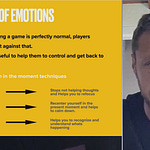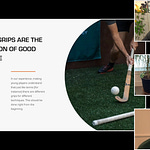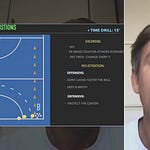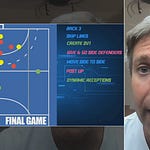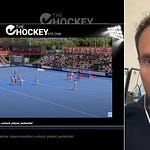Every coach knows that a one-player advantage during a match is a golden opportunity—but it’s also one riddled with pitfalls. After digging deep into Tin Matkovic’s recent masterclass on “One Up,” there’s one core lesson coaches should take to heart: Winning with a player up isn’t guaranteed by numbers—success depends on what you do with that extra player, in your tactics, team processes, and training environment.
Many teams freeze or rush when they’re a player up. Sometimes, the pressure to “make something happen” causes rushed plays and unnecessary turnovers, wasting the numerical advantage. Tin’s key advice? Don’t confuse being one up with just “attacking harder.” Instead, focus systematically on how your team manipulates space, controls tempo, and stays disciplined. This means designing your training sessions so players instinctively recognize defensive structures and actively seek the right moments to overload, rather than defaulting to hopeful, chaotic plays.
Why this matters for daily coaching:
Intentional Planning: Coaches must help players identify the opposition’s formation as quickly as possible when gaining an advantage. Is the opposition in man-to-man (Mandeckung), zonal, or a hybrid? Tin emphasized, “In tactical plan we first look at the oppositions, how they are standing...So in which known structure are they staying? So is it Zonal or Mandeku 1 vs 1 defense, is it zonal...with three strikers, three mids and now three defenders missing one or it’s more of a...some kind of zonal system.” That’s your cue to build drills that train visual recognition, not just technical skills.
Structure Training: Sessions should frequently simulate plus-one situations—ideally 11v10 or 10v9—so players learn not only the tactical routes to goal, but how to remain composed and patient. “No first ball turnover. If the opposition is playing high, if we cannot play a risky pass, do not play a risky pass. That would be a clear one.” This sounds obvious, but how often do coaches let their teams “wing it” in these moments during practice? Make plus-one attacking drills a staple—not just as a punishment when you’re down, but as a goal-oriented module when you’re up.
Balance Creativity and Rules: Coaches should clarify the difference between creative play and undisciplined risk. Encourage technical flair, but within clear frameworks—narrow vs wide build-up, targeted overloads, and checking mental readiness. As Tin puts it, “I like to teach is that in tactical plan we first look at the opposition...so this is what I asked them to see. And then we have this small principles of what do we want to do when we identified what the opposition is playing.”
Self-Reflection and Team Feedback: One overlooked practical angle is building the habit of team feedback and on-field adaptation. Don’t force rigid plans when you see resistance; let leaders on your team signal when a change is needed. “I’m a big believer in organizing what we want to do, but also giving people the space of doing something out of the box. Because I think also that there is no universal plan that will always guarantee success.”
Make it routine in practice to stop, reflect, and tweak as a group. During review sessions, help them decode how to use numerical superiority wisely and recognizably.
Why watch the whole masterclass?
This session isn’t just about finding quick tips—it’s about building a robust decision-making environment for your players in live plus-one scenarios. Over an hour packed with visuals, real match clips, and in-session problem-solving, Tin Matkovic unpacks not just theoretical ideas but practical, granular strategies and exercises a coach can integrate immediately.
Below, for paid subscribers, I’ve pulled out the three takeaways all field hockey coaches should bring onto the pitch, with detailed steps and training ideas for each.






